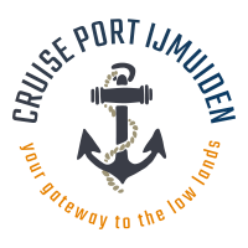Welcome to IJmuiden!
IJmuiden is a small but bustling harbor town located directly on the Dutch Coast and at the mouth of the North Sea Canal. It is not a suburb or part of the well-known city of Amsterdam but a standalone place with traditional customs, charms, and rich history.
At the beginning of our era, there was no place called IJmuiden, yet the region was already inhabited by tribes that would later be known as “Frisians”. The Romans were also present, and the settlement and harbor named “Castellum Flevum” -approximately located where the current village of Velsen stands- formed one of the northernmost defense works along the border of the Roman Empire.
Gradually, on the foundations of the Roman settlement, the village of Velsen developed over the centuries, right on the edge of fertile grounds and the dune area that stretches along almost the entire Dutch coast. The significance of this dune ridge as a settlement area is evident from the remains of many medieval castles found here.
The name Velsen is indeed a direct derivation from the Latin “Castellum Flevum.” Over the centuries, the name gradually changed; in the Middle Ages, it was Vellesan, which later became Velsen. IJmuiden is part of the Municipality of Velsen. Also, the names Felison, Velison, and Felisenum, which are still widely used, derive directly from the original name.
In the 17th century, this region was discovered by wealthier merchants from cities like Amsterdam and Haarlem, and they built many country estates, a considerable number of which still exist today. A fine example is the country estate Beeckestijn.
Driven by the Industrial Revolution, the mid-19th century saw the need for a direct connection between Amsterdam and the North Sea, eliminating the need for ships to make the cumbersome journey over the then Zuiderzee (now IJsselmeer).
On March 8, 1865, the digging of the North Sea Canal began, and in 1876, it was finally completed. The harbor entrance between the artificial piers was quickly discovered by regional fishermen as an excellent shelter and anchorage, giving rise, somewhat unplanned, to the settlement that would later become IJmuiden.
The influx of fishing vessels was so substantial that in 1896, the “Vissershaven” (Fishery Harbor) was put into use, solidifying IJmuiden as a true harbor town.
At the beginning of the 20th century, IJmuiden was a prosperous place with hotels, restaurants, a railway connection, and many grand villas where the affluent lived. The economic downturn of the 1930s brought an end to this prosperity, and in May 1940, IJmuiden was occupied by German troops. A large part of the original town was considered part of the “Festung IJmuiden” and was leveled by the occupiers after the forced departure of residents. Today, only a small part of the original buildings of IJmuiden remains.
After World War II, much new construction took place in IJmuiden -including under the leadership of the famous architect Dudok-, but “Oud IJmuiden” (Old IJmuiden) lagged and fell into decay. However, in the last decades, a large-scale redevelopment program has started, and the Oud IJmuiden district is now described as “upcoming” and “trendy.” The beautiful new houses and apartments are in high demand, not only among the original population but also among many newcomers from the region.
Over the years, the port of IJmuiden has undergone significant development, initially as a prominent fishing port. Still, due to the forced reduction of the fishing fleet, its importance has diminished. However, the port of IJmuiden is playing an increasingly crucial role as a base for the numerous vessels needed for the development of various offshore wind farms and the maintenance of offshore installations.
Since the arrival of the first cruise ship in 2001, IJmuiden has also developed into a significant cruise port. While not as large as the ports of Amsterdam and Rotterdam, it is a noteworthy player, considering its unique location close to the sea and the excellent facilities of the cruise terminals.
The origin of the population of IJmuiden is highly diverse, coming literally from all directions. Initially, there were canal diggers from far and wide, followed by fishermen from various parts of the country. In the 1960s, numerous workers from Southern Europe came to find jobs at the Hoogovens (now Tata Steel), one of the largest steel factories in Europe.
For this reason, IJmuiden is a true melting pot of cultures, explaining the somewhat raw mentality that is, nevertheless, characterized by a high degree of hospitality. Welcome to IJmuiden is always a warm welcome!
